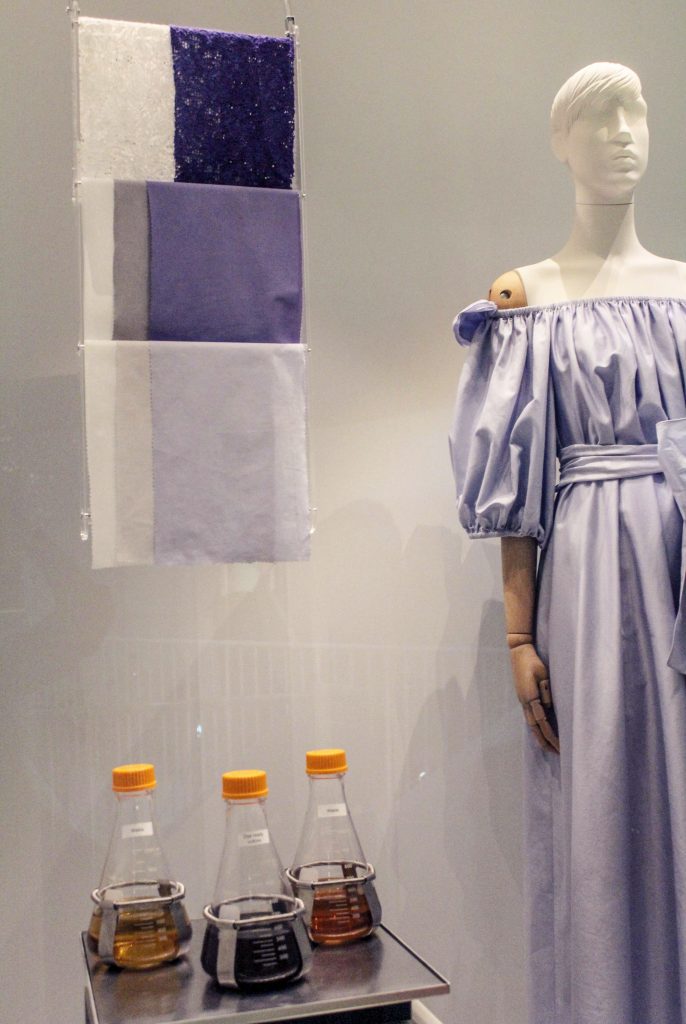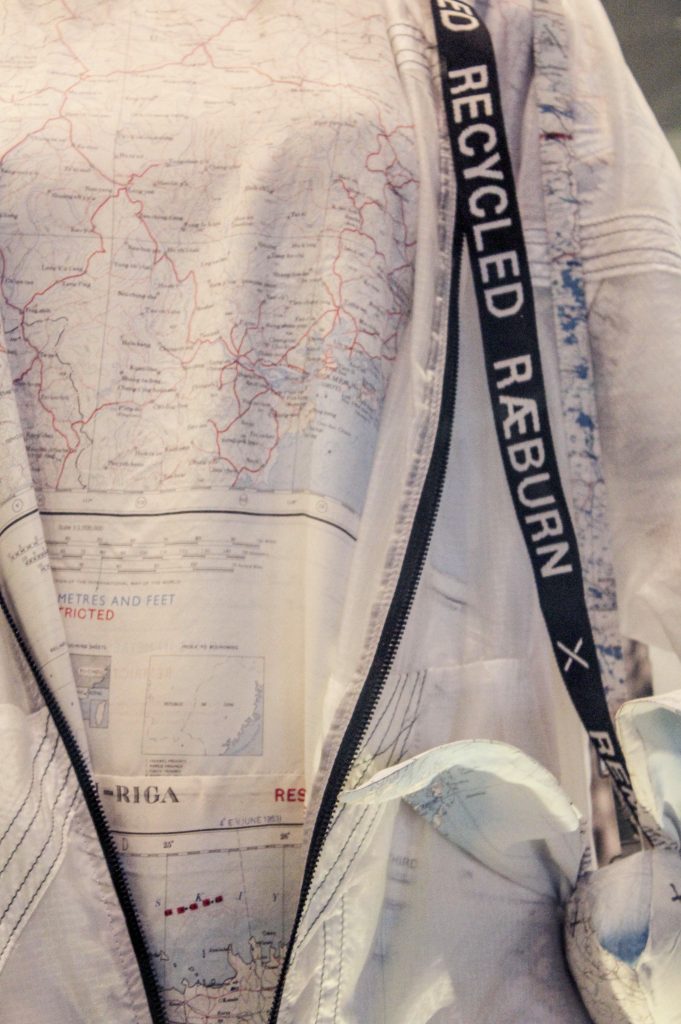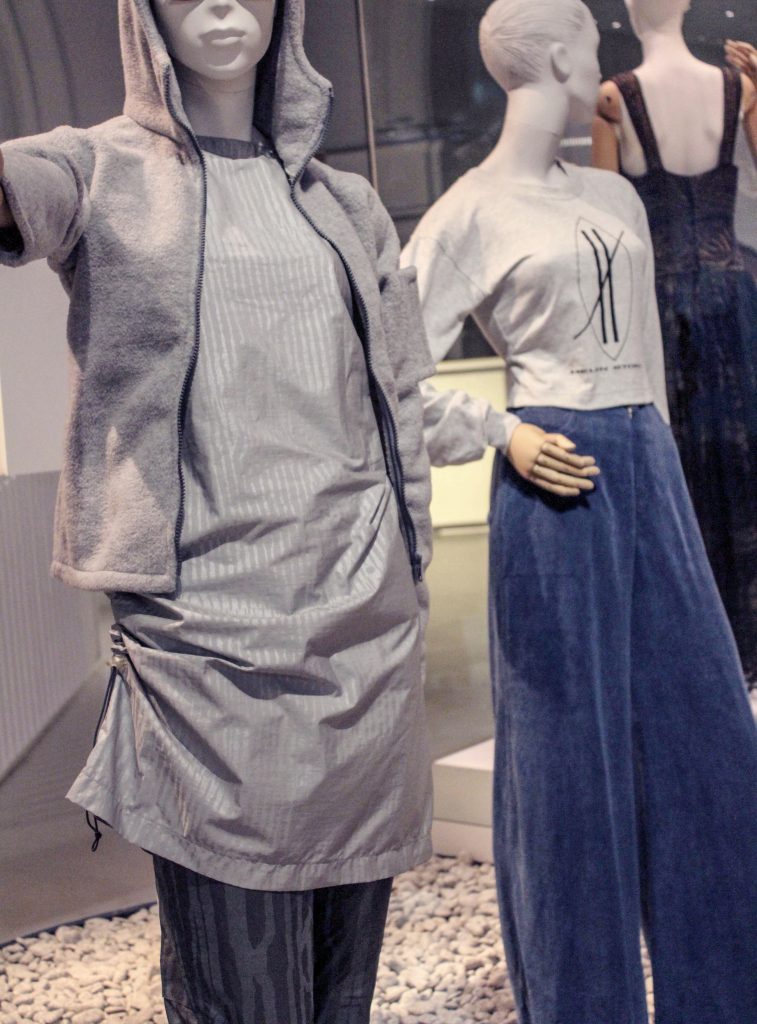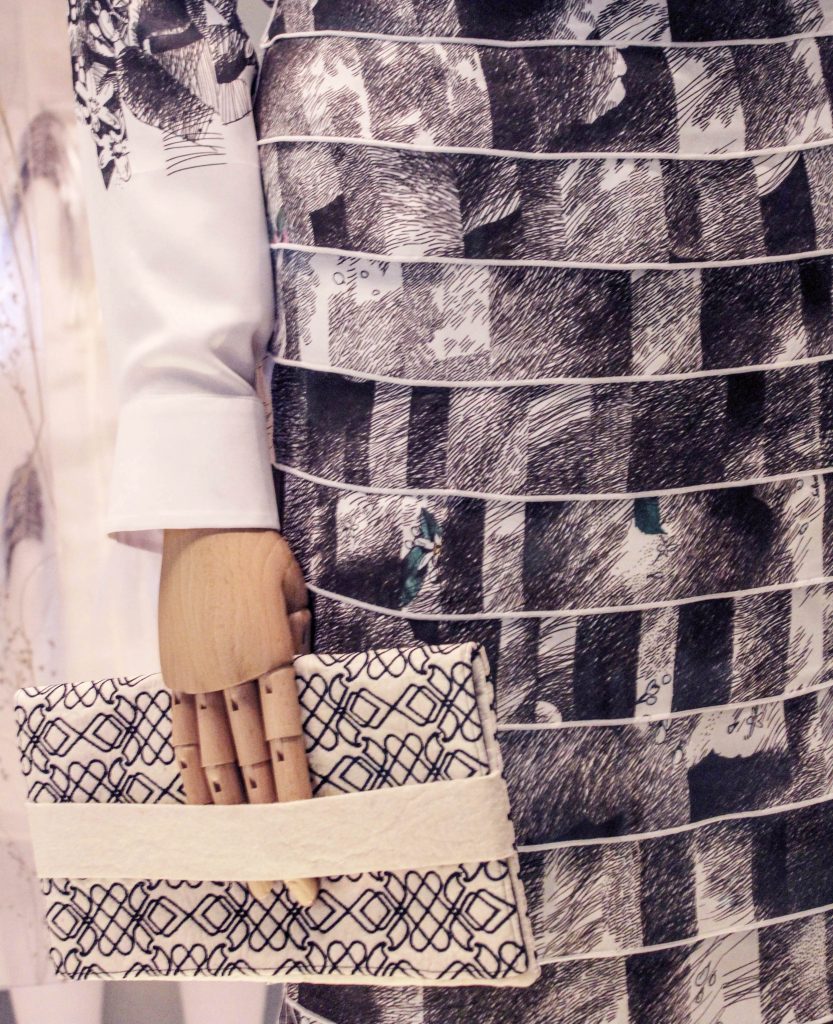FASHIONED FROM NATURE: THE FUTURE OF SUSTAINABILITY
Fashion and nature have always gone hand in hand, partly because getting dressed is such a natural activity and partly because plants, animals and insects have a long history of being used as resources and inspiration. The V&A’s current exhibition Fashioned from Nature highlights this while informing us of how fashion has harmed the environment and the forward-thinking ways it’s being used to nurture it.




It begins, amongst other things, with lace: linen threads finely worked with a needle, or plaited while wound on bobbins, to create intricate decorative patterning. In the 17th and 18th century, clothing was made using natural resources with silk, wool, flax, and cotton being the most popular. There was concentration on the craft of hand making, following the process from its start to finish. Then in the 19th century mass production came into force, the textile industry became mechanised and new technologies such as synthetic dyes became the norm. The drastic way in which the fashion industry grew, and the dependence on chemicals and coal, lead to high levels of water, waste and air pollution. But fashion production’s impact on health dates back to before then. Interestingly, the V&A museum holds many felt hats (kept in sealed bags) containing traces of mercuric nitrate which was used in the felting process from the early 1700s. Mercury poisoning causes trembling and anxiety and it’s this that supposedly lead to the expression ‘mad as a hatter.’
The growing impact of mass production arguably embodies a kind of selfishness, a desire for personal adornment over the consequences posed on the environment- a hierarchy that’s had a longterm presence in relation to animals too. Exotic birds were prized for their iridescent features, such as a rainbow-tinted hat from 1946 made from the Himalayan monal pheasant and shining earrings from around 1875 using the feathers of a male red-legged honeycreeper. An 1865 dress bejewelled in over 5000 glowing green beetle wings is an example of how beauty was found in the natural away from the obvious floral references.
Walking up the stairs to the second half of the exhibition and there’s an overall air of possibility as sustainable approaches become the core focus. A short-sleeved silk blouse by a London dressmaker, Esther Furguson, in 1942 is constructed from the remains of a burnt-out German parachute in an approach to that’s not too dissimilar from Christopher Raeburn today. Raeburn, a pioneer for reusable materials, has used recycled army blankets and kites for his outerwear- centred designs. The look on display, a matching dress, shoulder bag and hat from his 2017 REMADE collection, consists of 1950s escape maps first manufactured during the Second World War.
there’s an overall air of possibility as sustainable approaches become the core focus
Early researchers of eco conscious design are shown: A 1993 sweater and pair of loose-fit trousers by Helen Storey and an ensemble by Sarah Ratty’s 1990s’ Conscious Earthwear label involving a recycled PET plastic fleece hoodie. Presently, Stella McCartney is largely considered at the forefront of sustainable advocacy. In 2017 she collaborated with Bolt Threads for the first collection using the bio-engendered replica of spider silk, creating a tunic and trousers styled with the likes of a one-shouldered knit sweater. Bolt Threads is a protein fibre formed with genetically modified yeast, sugar, water and salt. Its production is clean, not needing the land, water and pesticides of traditional farmed fibres or the polluting chemicals of petroleum-sourced materials.
As well as fibres, there’s dyes such as Colorifix, a low-water, pollution-free method of dying. While using up to 10 times less water than conventional dyeing methods, modified microorganisms are added to the colouring process so that the dye fixes firmly onto the fabric leaving no waste. Another area that’s continuously being developed is alternatives to leather. Mylo is a textile developed by Bolt Threads using mycelium cells, the root structure of mushrooms. When grown with corn stalks and added nutrients, they interconnect to form a mass which is then tanned and dyed.
Vegea, on the other hand, is formed via the skins, stalks and seeds of Italian grapes left over from wine production which are simply compounded with a polymerised bio-oil. The result of both, displayed in the exhibition as a black Stella McCartney handbag and brown Tiziano Guardini clutch bag, is an appearance and texture uncanny to that of leather but without the reliance on animals.
Food waste, taken into account by Vegea, is a catalyst for design as well with Orange Fiber, a textile made from 100% Italian citrus juice that would otherwise be abandoned. In Italy, over 7000 tons of citrus juice byproduct are produced each year but Orange Fiber takes this and extracts the cellulose from the fruit which presents a polymer appropriate to be spun into yarn. Last year, Salvatore Ferragamo became the first brand to work with the silk-like fabric, Sicilian-inspired monochrome illustrations printed upon it and made into skirts, blouses, and t-shirts.
These elements of resourcefulness make sense in a way that makes you wish they weren’t spotlighted for their innovativeness but were the normality for design- the natural way of doing things. But the exhibition also emphasises the art of the handmade, encouraging us to be resourceful ourselves in a fun and individualist way. There’s a customised denim jacket and crocheted trousers by designer Katie Jones, both of which involving surplus stock yarn, and a scarf kit by DIY knitwear supplier Wool and the Gang. Whether it’s these long-established methods of creating fashion or approaching production in the most organic manner, the possibilities for a more sustainable future are wide. Situating this in the more interpretive and historically rich subject of nature, draws attention to it in a less obtrusive but fully enlightening way.
the growing impact of mass production arguably embodies a kind of selfishness

